16 Cool Facts About Snails For Kids 2024 (Interesting Facts)
Snails are the world’s slowest animals, moving about 0.5-0.8 inches per second. But, do you know they can cover 1km in almost a week, provided that if they don’t stop. Snails are one-of-a-kind creatures found in various environments, including deserts, ditches, and frigid climates.
Snails and slugs belong to the same category as squids, oysters, and clams, soft-bodied animals. However, compared to slug, snails have shells. Here are some fun snail facts about these long-term winners!
#1 There Are Over 60,000 Snail Species In The World
Snails evolved nearly 500 million years ago. A snail fossil, recovered from Myanmar in 2018, dates back to nearly 99 million years ago. This fossil maintained the snail’s shell, head, eyes, and foot in amber.

#2 Snails Are Born With Shells
Mollusks snails have hard shells of different shapes, colors, and sizes. Measuring anywhere from 0.68mm to 70cm, they weigh 25-45g. Snails in the wild live for 3 to 7 years, while those kept in captivity can survive for nearly 25 years.
#3 Snails are of Different Sizes, Colors, and Shapes
Snails come in a variety of shapes and sizes. They are normally beige to grey in hue, with shells that range from white to black or brown with spots or stripes. Angustopila Dominika is the tiniest snail species on the planet that can slide through a needle’s eye!
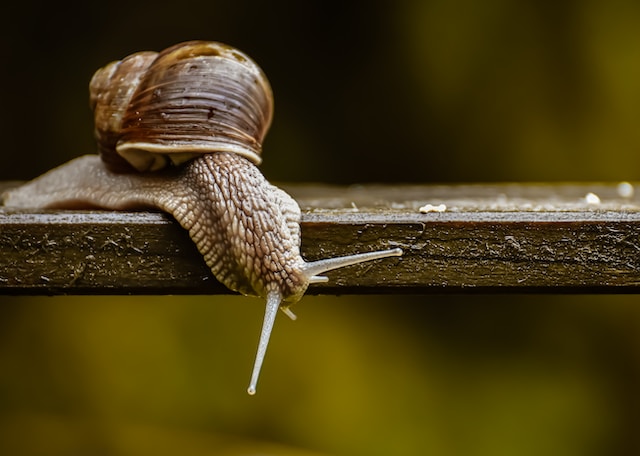
It was first observed from the soil samples in China in 2015. So the great Australian whelk is the first on the list for the world’s largest snail. Giant African snail is also very big in size.
#4 Snails Lack A Spinal Column
Snails have a soft, segment-free body that is lengthy, slimy, and moist. A snail’s body consists of one head with a pair of tentacles, a neck, a visceral hump, one foot, and a tail. Freshwater snails tentacles are located at the top of the snail’s head. In contrast, a smaller set is located in the lower portion of the head, which the organism utilizes to feel and smell.
#5 Snails Are Of Two Kinds
They live on land as well as in the water. While land snails are one of the most well-known species on the planet, they have only one lung. The marine and freshwater snails breathe through their gills.
Giant african land snail can be found almost anywhere, primarily in the top leaf litter of forests, marshes, and old fields and in certain invasive environments such as riversides, active fields and gardens, suburbs, and even cities.

Sea Snails exist in saltwater, marine-based species and are categorized under GASTROPODA species. The snail shell is spirally coiled, whereas the shells of impetus snails are tapered. Because their shells operate as robust protective barriers, sea snails are tough to prey on.
Sea snails can be found all over the planet, from the far north of the Arctic to the equator tracing down to the Antarctic Oceans. Seashores and deep ocean tunnels are known to be their habitats.
#6 Snails Can Be Either Carnivorous Or Omnivorous
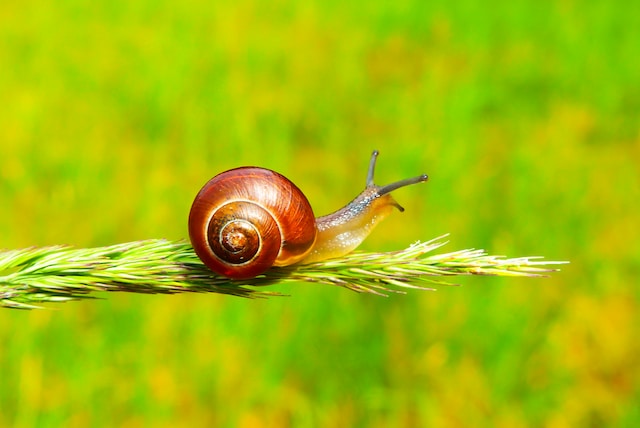
Land snails eat a variety of dead green herbs, plants, bark, algae, rotting wood, empty snail shells, fungi, animal scats, cement, limestone rocks, and various other things. For example, an algae plant is a popular food for herbivorous sea snails, while omnivorous sea snails eat small creatures.
#7 Life Span & Reproductory Cycle Of Snails
Most land snails live for 2-3 years, while the wild ones last up to 10 years in captivity. Snails have a flexible sexual development period ranging from 6 weeks to 5 years, depending on the species. Generally, the snails do not like to self-fertilize. Therefore, they mate as snails have both reproductive organs (male and female). Snails can lay up to 100 eggs in a clutch, but only 20 to 50 of them will hatch.
#8 Snails Don’t Feel Pain
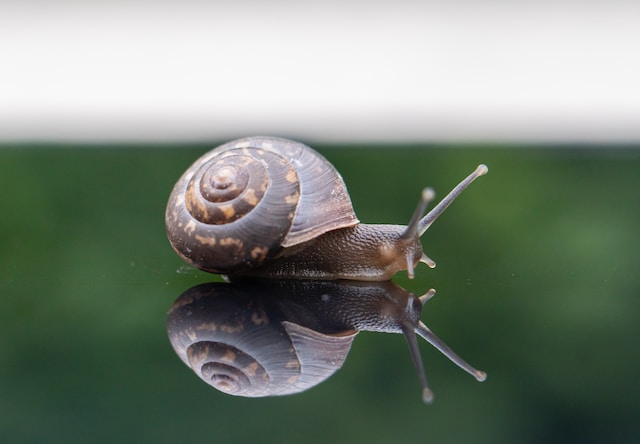
Snail shells are unique & beneficial. A snail’s shell serves as both housing and a protective shell for the creature’s organs in its mantle. A snail shell can mend from minor cracks or damage, but not from a shell that had been entirely obliterated.
#9 Snails Do Not Have Jaw
The snail’s mouth is extremely small compared to the size of a pin. Regardless of this fact, they have 20,000 teeth in their mouths. Snails eat via their radula, a long sac lined with many small teeth. They scrape and digest with this organ. Instead of teeth, a sea snail’s mouth features a hard ribbon that helps it grind and rip its food. It moves by ripping the skin with its foot, leaving a mucus trail in its mouth.
#10 Snails Hibernate In Winter

Snails are mostly nocturnal creatures, but you can see a few very early in the morning as well. They prefer dark and damp environments. When it’s hot, they tend to live in underground burrows. These tiny creatures are more difficult to handle than they appear! When the weather becomes extremely dry, they sleep to secrete enough mucus to keep them alive. Their naps can last anything between a few hours to three years.
#11 Some Snails Trail Others To Move Faster
Akin to humans, snails can rely on their fellow snails for a speed boost. If they follow their associate’s trail, they can gain traction. Snails can’t hear, so they hunt for food with their sense of smell.
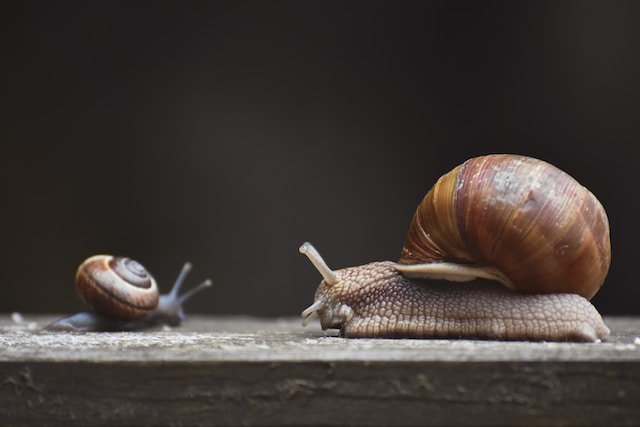
Besides their tentacles and slime, snails also communicate through chemical residue. For example, they use their feelers to communicate through touch, while other species can interpret mucus trail.
#12 Snails, A Gastronomic Delight
Snails can be found nearly everywhere. At the same time, most gardeners dislike common garden snails by considering them as pests. Snails are also considered a gastronomic delicacy. As snails are considered quite healthy to eat, they are consumed worldwide.
Helix Aspersa, Theba Pisana, and Otala Lactea are the most consumed snail species, with immune-boosting characteristics and anti-cancer properties owing to their antioxidant and anti-inflammatory effects.

#13 Snails Have a Positive Effect On Human Health
Snails have been regarded as nutritious for ages, not only as a source of protein but also because the Greeks and Romans used them to treat various diseases, including stomach cramps, relief from jaundice, dizzy spells, and coughing up blood.
In the 18th century, they were a recommended treatment for Anthrax and Tuberculosis in the 19th century. Broth made from snail mucus was considered encouraging the regeneration of wounded skin, skin smoothening, and reducing inflammation.
Face masks, creams, and gels containing snail slime have become quite popular in recent years. From a significant number of observations made by farmers in Chile, snail slime is now being considered to heal cuts and scars for a speedy recovery. In addition, snails are an excellent source of iron, which is essential for building red blood cells and energy circulation in the body.
Snails are full of vitamin B12, which is important for the nervous system’s health. They are also a wonderful source of magnesium which can help maintain blood pressure, maintain the heart rate, and strengthen bones. In addition, snail extracts in powder can be used to treat varied skin conditions like acne, age spots, wrinkles, acne scars, and expression lines.
#14 Snail Shells Have Many Uses Too
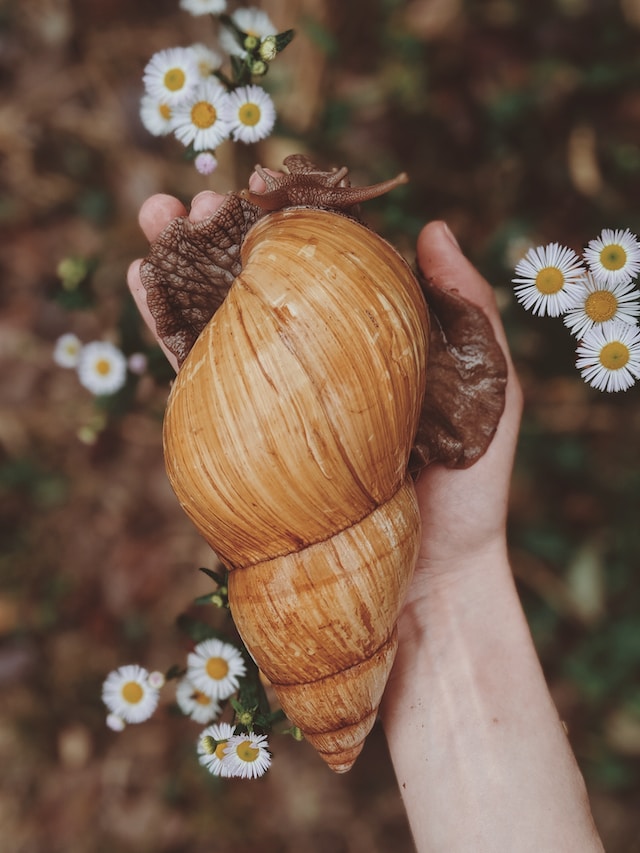
Snail shells are a rich source of calcium. As a result, they have been used largely in construction, ceramic, paper, paint, and animal feed industries. For example, snail shells are used as fillers to improve paper capacity; crushed snails can manufacture face powder; they are known to increase product hardness, material strength, and resistance to weathering.
#15 The Snail Population Is Withering
Salt is fatal to snail life. As the snail’s slime, which covers its body comes in contact with the salt, it creates a high saline solution that rapidly dehydrates its body through osmosis, which leads the snail to bubble, shrink and then die of lack of water.
#16 Snails Are Becoming Extinct
They may be small and slimy; they may lack the allure of an Orangutan or a Northern Bear. Yet, they’re becoming extinct, pretty much like the world’s flora and fauna! So why does their extinction matter?
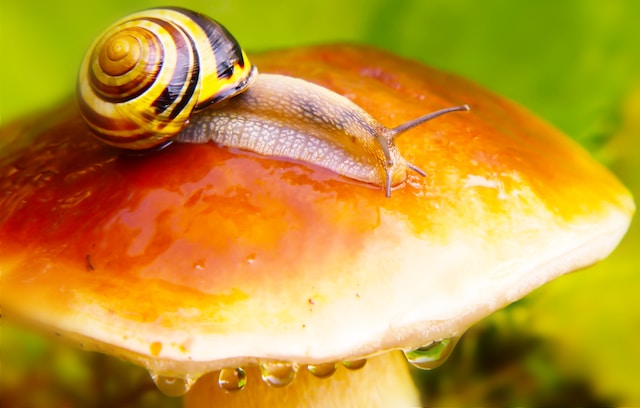
Most aquatic and other species rely on snails for their diet. While most land snails eat leaf litter and fungi, which aids in decomposition, the carnivore snails keep other species in line. In addition, snail shells are constructed of calcium carbonate, which remains a vital research tool after a snail’s death in terms of evaluating marine sedimentation and soil pockets as evidence of prior organic groupings that directly relate to the ecology of a given habitat.
Land snails are interesting topics for studying how life developed on Earth because they have a relatively small terrestrial variety when coexisting with other species. Living snails can also be used as early warning signs if something is wrong with the ecosystem.
For example, suppose sea snails that manufacture their shells from calcium carbonate find it difficult to build their protective armor. In that case, this is a concerning fact regarding acidification in the ocean.
Conclusion
This article has outlined some astonishing snail facts that most people may not be aware of. For example, moving at a snail’s pace may indicate extremely slow movement. Still, it also highlights the virtue of being patient to maintain that steady pace.
Snails may take a day to traverse a mile, but they’re much more than nature’s sluggers. We hope you’ve liked learning about them, and these snail facts have helped you discover some of your secrets.
